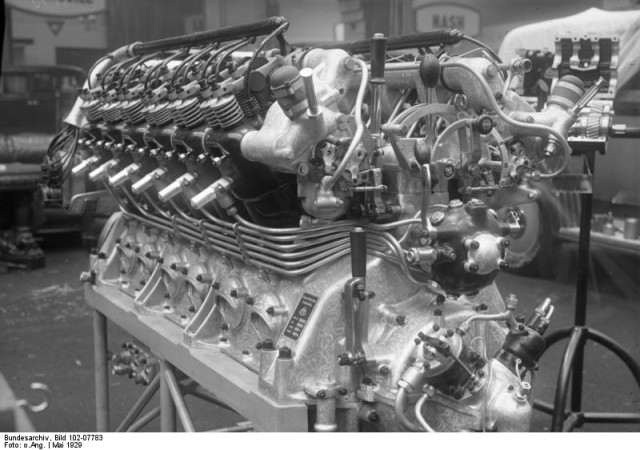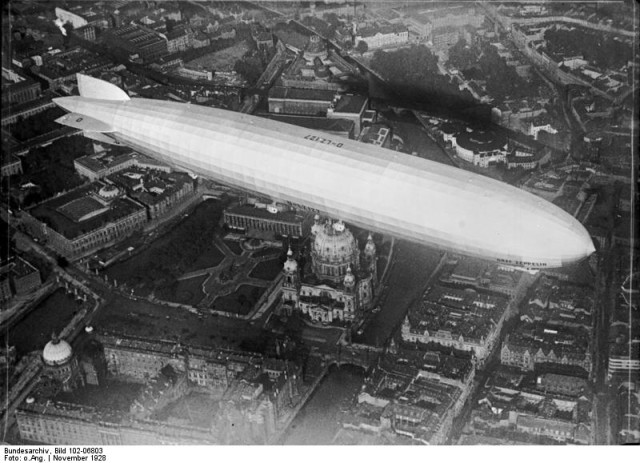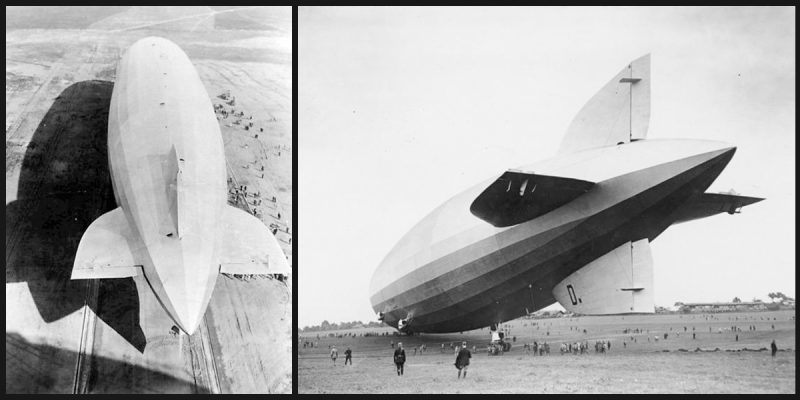LZ 127 Graf Zeppelin was a German-built and -operated, passenger-carrying, hydrogen-filled, rigid airship. The Graf saw nearly nine years of uninterrupted service, totalling nearly two years in the air and travelling some 1.7 million kilometres. It was named after the German pioneer of airships, Ferdinand von Zeppelin, who was a count (Graf) in the German nobility. During its operating life, the airship made 590 flights covering more than a million miles (1.6 million km). It was designed to be operated by a crew of 36 officers and men. It was scrapped for fighter plane parts in 1940.

Although the Graf could achieve a top airspeed of 128 km/h (80 mph, 70 knots) at its maximum thrust of 2,650 horsepower (1,980 kW), its normal operational airspeed was 117 km/h (73 mph, 63 knots) with a thrust of 2,150 horsepower (1,600 kW). Some flights were made using only Blau gas carried in the dozen power gas cells which enabled the airship to cruise for up to 100 hours.

Using gasoline alone it was able to cruise for 67 hours, and up to 118 hours using both. The Graf Zeppelin had a total lift capacity of 87,000 kilograms (191,800 lbs) with a usable payload of 15,000 kg (33,000 lbs) on a 10,000 km (6,200 mi) flight.

Graf Zeppelin made its first flight on September 18, 1928, under the command of Hugo Eckener. The ship lifted off at 3:32 PM and flew a little over three hours before returning to its base in Friedrichshafen.

On this first transatlantic trip, the airship suffered potentially serious damage to its port tail fin on the third day of the flight when a large section of the linen covering was ripped loose while passing through a mid-ocean squall line at night about 1,500 miles (2,400 km) east of Bermuda.

In 1929, the Graf made perhaps its most famous flight; a round-the-world voyage covering 21,2500 miles in five legs from Lakehurst to Friedrichshafen, Friedrichshafen to Tokyo, Tokyo to Los Angeles, Los Angeles to Lakehurst, and then Lakehurst to Friedrichshafen again.



Graf Zeppelin was over the Canary Islands on the last day of a South American flight from Brazil to Germany when it received news of the Hindenburg disaster in Lakehurst, New Jersey. Captain Hans von Schiller withheld the news from his passengers and told them of the disaster only after the ship’s safe landing in Germany.

The ship landed in Friedrichshafen on May 8th, 1937, and never carried a paying passenger again.




It made only one additional flight, on June 18th, 1937, from Friedrichshafen to Frankfurt, where she remained on display — all her hydrogen removed — until she was broken up on the orders of Hermann Goering’s Luftwaffe in March 1940.
